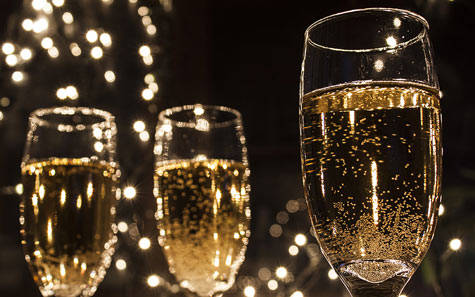 So says Champagne Warrior Brad Baker. When high-end bottles and desirable, limited vintages are in demand, yes, fake champagne can be a thing. Here's more on “Bogus Bubbles” from the Terroirist blog (terroir is a French word for the set of conditions like soil, weather, topography in a specific wine-making region—we feel savvier already):
So says Champagne Warrior Brad Baker. When high-end bottles and desirable, limited vintages are in demand, yes, fake champagne can be a thing. Here's more on “Bogus Bubbles” from the Terroirist blog (terroir is a French word for the set of conditions like soil, weather, topography in a specific wine-making region—we feel savvier already):
One type of fakery simply requires the swapping of younger, cheaper Champagne into an older, authentic empty bottle of a more prized vintage…. This was the m.o. of Signore Frisciata, a 29-year-old Italian who was arrested last year [2011] following an investigation launched by a private collector who purchased bottles of 1929 Moet & Chandon, only to discover that the wine contained within was of a much more recent vintage. According to published reports, Frisciata bought newer releases of Champagne and filled older empty bottles to which he affixed counterfeit labels. The police seized a cache of counterfeit labels and tools from his home workshop, along with completed bottles ready for sale…
At the end of the day, most counterfeit Champagne is hard to detect, no matter the method of production. The reasons are many and varied: Champagne houses were notoriously bad at record keeping, at least before World War II, and were inconsistent in the bottles, labels and corks they used. Also, like with older red wine, it’s hard to say what a correct bottle is supposed to taste like, and, to an even greater degree than with, say, Burgundy, there is a lack of experienced tasters. This leads to audacity on the part of counterfeiters, who are emboldened to say, as Baker puts it, “Sorry, they were bad and too old, better luck next time, but what did you expect with wine this old?” Or perhaps the drinker just doesn’t understand old Champagne. “[U]nless you have had the wine before – how would you know?” Baker says.
See? There is a hidden advantage to a lack of taste—no one bothers counterfeiting rotgut.
